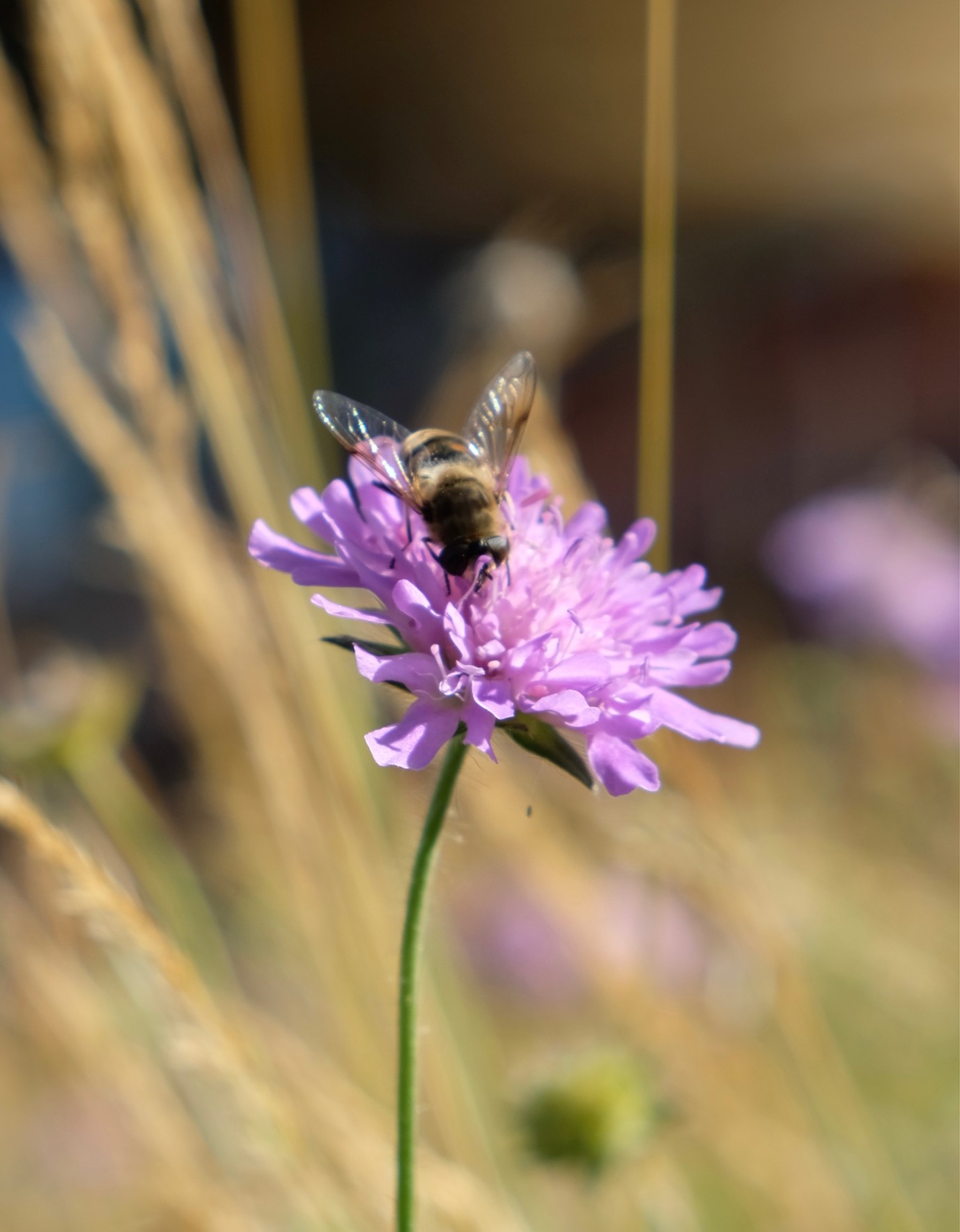Scientific name: Knautia arvensis
Common name: Field scabious
Flowering time: June to October
Where to find it on campus: all over the place
This plant was named after the German botanist Christian Knaut. The common English name arose because it offers a treatment for scabies and other skin rashes. Its common name in Dutch, beemdkroon, means field crown. ‘Let me show you why,’ says Joop. Although the pale mauve flowers look like single flowers, they are actually many flowers clustered together into what is known as a ‘flower head’. Such species belong to the composite or false-composite families. The K. arvensis presented here belongs to the latter. So, what looks like a petal is actually a complete flower. In this particular species, if you pluck all the flowers from the flower-head, you expose the green calyxes which look just like a bunch of crowns – hence the name ‘field crown’.
Wild bee
There are over 300 wild bee species in the Netherlands, many of them on the red list of endangered species. One such bee is Andrena hattorfiana. This large, solitary bee is completely dependent on Knautia arvensis for food and doesn’t visit any other flower. This bee is very rare and usually only found around South Limburg but something really exciting happened recently when it was spotted in the WUR campus garden! ‘It was one of the most spectacular finds,’ says Joop. Research done at WUR found that it takes 72 clusters of flowers (or 11 individual plants) per day to provide for one average nest of this particular bee species. Finding this bee species on campus says great things about the biodiversity we have here.

 The Field scabious is all over the place on campus. Photo Julia van der Westhuyzen.
The Field scabious is all over the place on campus. Photo Julia van der Westhuyzen. ![[Seriously?] The Gulf of WUR](https://www.resource-online.nl/app/uploads/2025/02/WEB_DeNeus.png)

